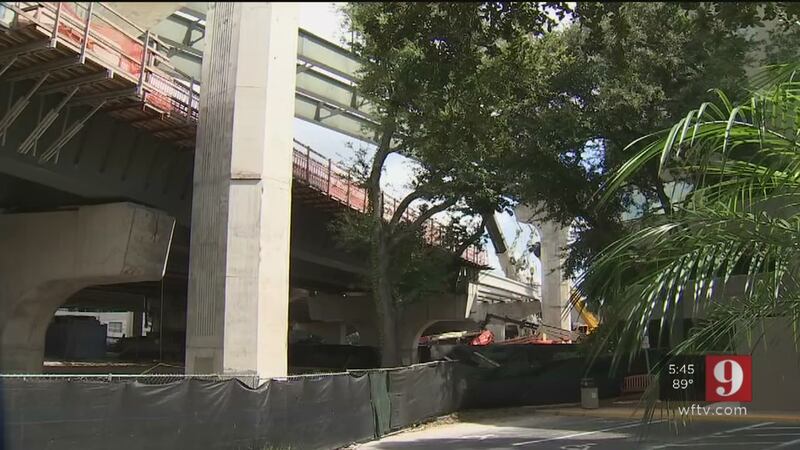ORANGE COUNTY, Fla. — It's been more than a month since the latest I-4 Ultimate worker was killed in the construction zone.
Now Eyewitness News is getting a better look at what changes are now in place to make sure no one else is killed during construction.
The changes come after Ulises Corrales Ibarra was crushed by a cement girder in late September at the I-4 and 408 interchange.
TRENDING NOW:
- Baby's remains removed from grave, headstones vandalized at Florida cemetery, deputies say
- Fourth parent alleges abusive culture, video shows noose hanging in Oviedo H.S. locker room
- Spooky Florida: Urban legends, myths, haunted places across the state
- Petition started to shut down McKamey Manor, haunted house that requires 40-page waiver
An Orlando Police Department report said Ibarra was working in a hoist cage when a giant cement girder tumbled out of control and crushed him and equipment underneath.
SGL said the circumstances behind the accident remain under investigation. In a statement, SGL said, "Work will resume with precautionary modifications and safety measures that include expanded girder restraint procedures during installation."
New documents obtained by Eyewitness News shed light on the preliminary investigation and what new procedures are in place to prevent another incident like the one that killed Ibarra.
The report completed by Thorton Tomasetti on Oct. 10 says the beam "would not have overturned/slid if it was braced…and/or attached to the crane. To avoid a similar incident in the future, TT recommends that the crane shall remain attached to the beam…until all bracing is installed as a redundancy measure."
"The procedures they have in place for installing these very heavy 65,000-pound precast girders were inadequate in retrospect," said Michael Gibbons of Lowndes Law, who has been practicing construction law for 26 years.
Gibbons says the shop drawings show a kickstand to support a girder during installation has always been part of the safety procedures. He says the report shows changes to what happens while the kickstand support is being installed.
"The difference with the post-accident sequencings is that while the bracing/kickstands are being installed, the girder is still supported by the crane," Gibbons said. "So at all times there is no little window of time, the way there was in the original sequencing, where you can have a shifting or falling of the 65,000-pound girder."
Gibbons said it's hard to tell based on the documents at hand whether the contractor knew there was a potential for the shifting or falling of the girder when initial procedures were approved in June 2018.
"It's not something I can opine or tell you about, but we know it happened in this instance," Gibbons said.
The report says the final report on causation will be issued by November.
Not near a TV? Click here to watch WFTV newscasts live
Cox Media Group







